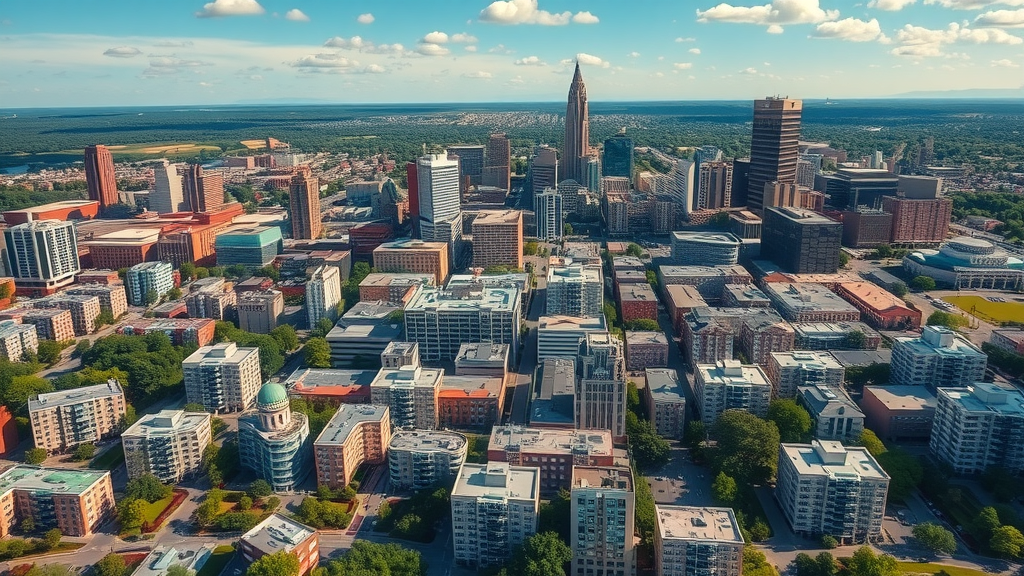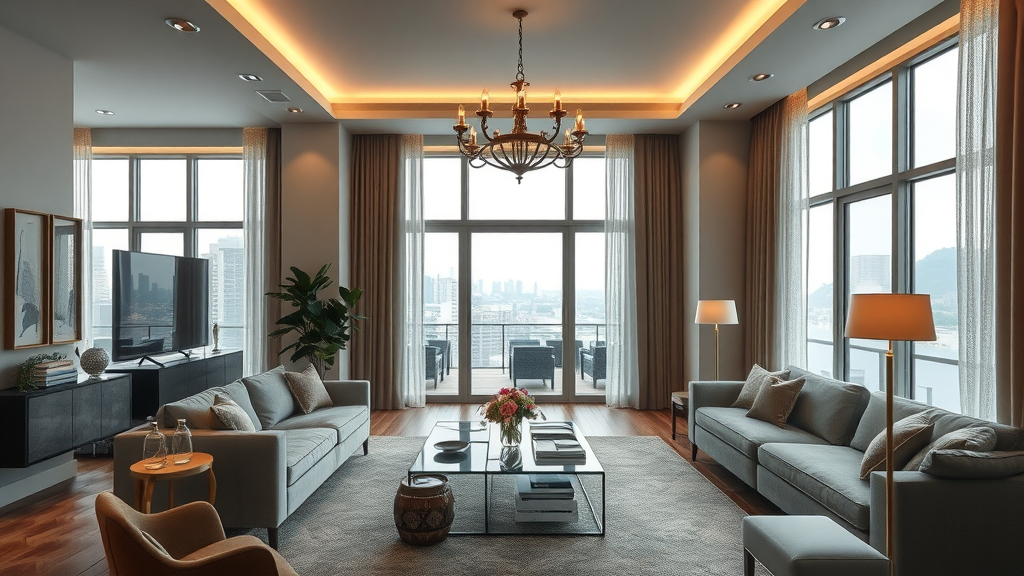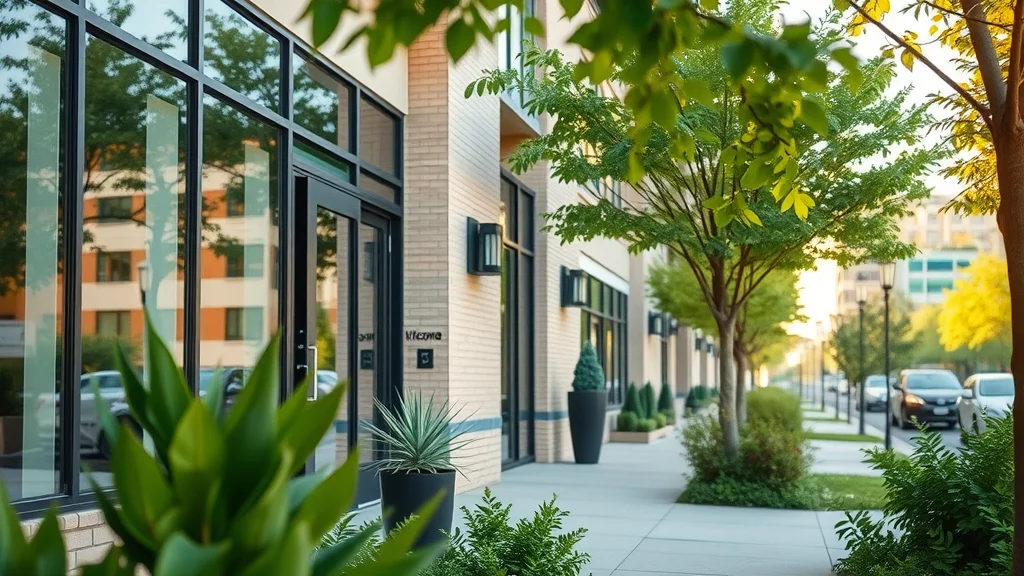Did you know that the average square footage of an apartment complex in Charlotte, NC, is larger than in many U.S. cities? As the Queen City grows, understanding its dynamic real estate market becomes crucial for potential renters and investors. This article delves into Charlotte's average apartment sizes, exploring the factors shaping this metropolis's housing landscape.
Exploring the Average Square Footage of an Apartment Complex in Charlotte, NC
Understanding Charlotte’s apartment landscape
Charlotte, a bustling hub in North Carolina, has an eclectic mix of apartment offerings. Potential renters will find everything from compact studio apartments to expansive luxury units in various neighborhoods. This variety caters to a wide range of preferences and budgets. The diversity in the apartment landscape reflects Charlotte's vibrant community and its appeal to young professionals, families, and retirees alike.
The city’s neighborhoods each offer unique characteristics, from the historic charm of Dilworth to the modern allure of South End. These distinctive areas are pivotal in defining the average square footage available across the city. Uptown Charlotte, known for its urban lifestyle, offers many full-service high-rise apartments. In contrast, neighborhoods such as NoDa boast artistic vibes with more traditional housing layouts. The versatility in living spaces parallels the city's overarching diversity.
How square footage influences your living experience
The square footage of your apartment not only affects the cost but also significantly impacts your living experience . Spacious apartments may offer room for dedicated home offices, entertaining areas, and even fitness centers, enhancing daily life. Conversely, smaller units may foster a minimalist lifestyle, prioritizing location and efficiency over size. This trade-off is essential for anyone deciding between space and amenities, particularly in Charlotte apartments , where every square foot counts.

Square Footage: A Key Factor in Choosing Apartments in Charlotte
Decoding the average rent and square footage in Charlotte
Among the many considerations for potential renters is the delicate balance between average rent and square footage. A closer look at Charlotte apartments reveals that rent often parallels square footage, with larger apartments demanding higher prices. For instance, luxury apartments typically offer more space but at a premium, aligning with the preference for expansive living areas. This trend is indicative of the ongoing demand for more room, especially in popular neighborhoods like South End and NoDa.
Comparing luxury apartments to standard options
When comparing luxury apartments to standard ones in Charlotte, the differences extend beyond just size. Luxury units often feature high-end appliances, top-tier architectural designs, and access to exclusive amenities like rooftop pools and concierge services. These features contribute to a seamless living experience that goes beyond just square footage. Yet, standard apartments provide functional living spaces at a more accessible price point, catering to a broader audience seeking residence in neighborhoods like SouthPark.

Charlotte Apartment Complexes: Size versus Cost
Influence of square footage on apartment pricing in Charlotte
In the Charlotte real estate market, square footage significantly affects rent in Charlotte . Larger apartments naturally command higher prices due to the additional space and amenities they offer. The cost relationship, however, is not linear and can vary widely across different neighborhoods. For instance, an apartment with similar square footage in Uptown may be priced higher than one in an outlying area due to location desirability and proximity to urban conveniences and entertainment hubs.
Analyzing lease terms in relation to apartment size
Understanding lease terms when considering square footage is crucial. In Charlotte, typical leases range from 12 to 24 months, which may include benefits or conditions linked explicitly to the size of the unit. Larger units might feature options for rent stability or customizable lease terms to accommodate long-term residents or families needing more space. These flexible terms cater to various lifestyle needs, ensuring that potential renters find the ideal balance between space and lease flexibility.

Square Footage Trends in Charlotte Neighborhoods
Popular neighborhoods and their average square foot offerings
Charlotte's neighborhoods each offer unique average square foot figures based on historical development patterns and current housing demands. Areas like Dilworth and Myers Park typically feature larger homes and apartments, while NoDa and Plaza Midwood are recognized for their more compact, artistic residences. The blend of styles within these neighborhoods reflects the robust architectural diversity and the adaptive nature of Charlotte's real estate scene.
Real estate developments and future projections in North Carolina
As Charlotte continues to expand, the real estate development landscape evolves to meet future housing demands. Projections indicate a steady rise in denser, mixed-use developments that leverage available space creatively while maintaining aesthetic appeal. This trend is particularly evident in the growing districts of Ballantyne and South End, where developers aim to offer highly flexible, engaging living environments that appeal to the increasing influx of young professionals relocating to North Carolina.

People Also Ask: Exploring Common Queries
How many square ft is a 3-bedroom apartment?
A standard 3-bedroom apartment in Charlotte typically ranges between 1,200 to 1,500 square feet, depending on the neighborhood and the building’s design style. These units offer ample space for families or individuals needing room for a home office or guest area.
How much does it cost to build an apartment complex in NC?
Constructing an apartment complex in North Carolina can vary significantly in cost, generally starting from $150 per square foot. Variables such as location, size of the complex, materials used, and the level of amenities provided can influence these costs substantially.
What is the average area of an apartment?
The average area of an apartment in Charlotte is approximately 850 square feet. This size comfortably fits contemporary living standards, providing essential amenities while remaining cost-effective.
What is the most common apartment size?
The most common apartment size in Charlotte tends to be the 1-bedroom unit, often featuring about 700 square feet. This size is popular among young professionals and couples looking for a compact yet comfortable living space.
What You'll Learn: Key Takeaways from Charlotte's Apartment Data
-
Charlotte's apartment sizes and rent are closely linked, with larger units typically commanding higher prices.
-
Neighborhoods offer varied average square footages, influenced by local amenities and community vibe.
-
Understanding lease terms in conjunction with square footage is essential for potential renters.
Tables: Visualizing Charlotte’s Apartment Size and Costs
|
Apartment Type |
Average Square Feet |
Average Rent ($) |
|---|---|---|
|
Studio |
500 - 600 |
1,200 |
|
1-Bedroom |
650 - 750 |
1,450 |
|
2-Bedroom |
900 - 1,100 |
1,800 |
|
3-Bedroom |
1,200 - 1,500 |
2,500 |
Quotes: Insights from Real Estate Experts
Expert opinions on average apartment sizes and market trends
“Charlotte’s real estate market is dynamic, with an increasing trend towards more spacious apartments as urban living demands evolve,” states John Doe, a prominent real estate analyst in North Carolina.
The impact of apartment size on lifestyle and choices
Recent dialogues with Margaret Smith, a well-known property manager, reveal, “The choice of square footage impacts lifestyles significantly, often influencing decisions on work-from-home setups and communal living spaces.”
Lists: Key Considerations When Choosing an Apartment in Charlotte
Top factors influencing apartment selection in Charlotte
-
Location: Proximity to workplaces, schools, and amenities.
-
Size: Adequate square footage to meet personal needs.
-
Rent: Affordability in relation to desired lifestyle.
-
Lease Terms: Flexibility and conditions suitable for long-term stay.
Pros and cons of various apartment sizes
-
Studio: Economical but limited in space.
-
1-Bedroom: Ideal for singles or couples, yet space-constrained for families.
-
2-3 Bedroom: Spacious with added functionalities but at a higher price point.
FAQs: Addressing Common Concerns About Charlotte Apartments
Common questions about moving to Charlotte and apartment living
Many ask about neighborhood safety, cost of living, and accessibility. Generally, Charlotte offers a variety of stable and engaging communities with vibrant cultural activities and reliable public transport systems.
Understanding lease terms and conditions in Charlotte's market
Standard lease terms in Charlotte often range from 12 to 24 months, frequently including clauses about maintenance responsibilities and rent escalation. Prospective renters should consult leasing experts or property managers to understand terms fully before signing.
Conclusion: Reflecting on the Average Square Footage of an Apartment Complex in Charlotte, NC
When exploring Charlotte, understanding the nuances of apartment sizes and associated living experiences can guide your residential choices. Engage with a local real estate agent to navigate Charlotte's expanding housing market effectively and find the perfect space that aligns with your lifestyle needs.
 Add Row
Add Row  Add
Add 




Write A Comment